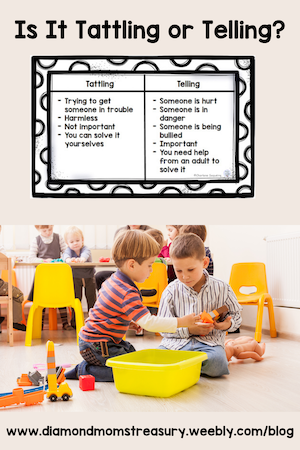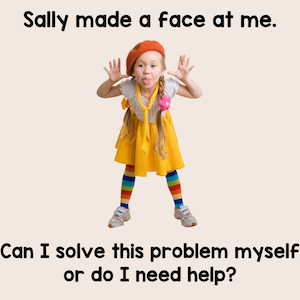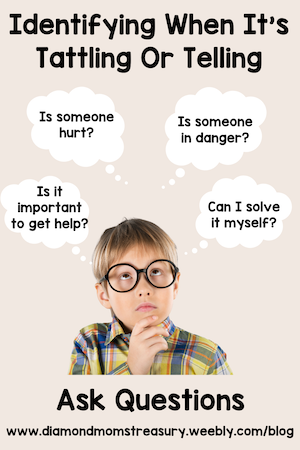|
Have you ever felt like the tattling would never stop? Young children feel the need to tell about everything. "Johnny budged in front of me". "Susan was looking at Matthew's work." Nancy brought candy to school." It goes on and on. Teaching young children the difference between tattling and telling is an important skill that all kids need to learn. Is it tattling or telling?What does tattling look like? Well, it looks like fingering a classmate for taking something without permission, talking during quiet work time, sneaking food or toys into the classroom or purposely disturbing another student's work. It is natural for young children to blurt out any information they have, but when it comes to true cases of tattling they are often just trying to get someone in trouble. This can be tricky to catch, as some young kids may not understand the difference right away. Telling often feels different than tattling; it has a purpose and urgency to it. It often means that someone needs help or there is a safety issue. For example: if you saw a classmate getting physically hurt or being scared or teased by someone else, that would be considered telling. Here is an anchor chart that may help your kids to decide if an incident needs to be told or not. Teaching young children the difference between telling and tattling is a very important SEL skill to master. To do this, children need to understand what it looks and feels like in real world examples. Telling could be letting an adult know that someone has fallen off the playground equipment, while tattling would be informing an adult that someone has pushed them in line. Being able to recognize the difference will help a child know when it is appropriate to report something and when it’s not necessary. This can empower them to make good choices. As teachers, we need to take the time to provide scenarios for young students to practice and role play through these situations as well as have conversations about why specific scenarios are either an example of telling or tattling. Although it may be exhausting at times to deal with tattling, you need to be able to calmly encourage them to try to solve things themselves. Asking questions like "Is someone hurt?" "Is this a safety issue?" "Is someone in danger?" may help them to stop and think before they come to get help. If they do come to you, the best thing you can do is keep relaxed and calm with your responses so that they learn to trust you as an ally and friend. It is important for kids to know that they can rely on you when it is necessary to get help. Related Posts
0 Comments
Leave a Reply. |
About Me Charlene Sequeira
I am a wife, mother of 4, grandmother of 9, and a retired primary and music teacher. I love working with kids and continue to volunteer at school and teach ukulele. Categories
All
|














 RSS Feed
RSS Feed